Welcome to another edition of Willoughby Hills!
This newsletter explores topics like history, culture, work, urbanism, transportation, travel, agriculture, self-sufficiency, and more.
The longest portion of my career was spent working for the PBS show This Old House and its sister program Ask This Old House as a producer and director.
Some of my favorite stories to produce were the ones that introduced people to new ways of thinking about their houses. Back in my day (I say fully knowing that I sound like an old man in a rocking chair on a front porch), we told a lot of stories about renewal sources of home power and heating.
We covered the installation of a home wind turbine installation in Texas, solar battery storage in Hawai’i, and even went to Germany in 2015 to learn about that country’s aggressive plan to reduce fossil fuel consumption and nuclear power by encouraging large scale renewables.
(A decade after filming that story, Germany is now powered by 60% renewables and closed their final nuclear power plant in 2023. The U.S., by contrast, sits at about 21% renewable, 19% nuclear, and 60% fossil fuels).
Perhaps my favorite stories to tell were ones featuring geothermal heating and cooling. Geothermal is still a rarity in the U.S., at least partially due to a large upfront cost, but it’s something that I wish would take off the way rooftop solar has in the last decade.
Essentially, once you get below the earth’s surface, the ground stays a consistent temperature. That temperature can be used to efficiently heat or cool a house simply by pumping a liquid through underground pipes and using a heat exchanger to spread that heat or cooling throughout the home. It’s eliminates the need for a fossil fuel like natural gas, propane, or oil, and there’s no outdoor equipment like there would be with an air conditioner or an air-source heat pump.
There have been several This Old House renovations over the years that featured geothermal installations. I produced a segment with Dandelion Energy, a company that was incubated at Google before being spun off as a separate entity, which developed some interesting ideas to make geothermal more accessible and affordable.
I also produced a segment in a subdivision outside of Austin made of cookie cutter homes that were all tied into a central geothermal system. The developer of that project essentially treated geothermal as a piece of infrastructure for the neighborhood, in the same way he viewed the necessity of paved streets, sidewalks, and sewer pipes.
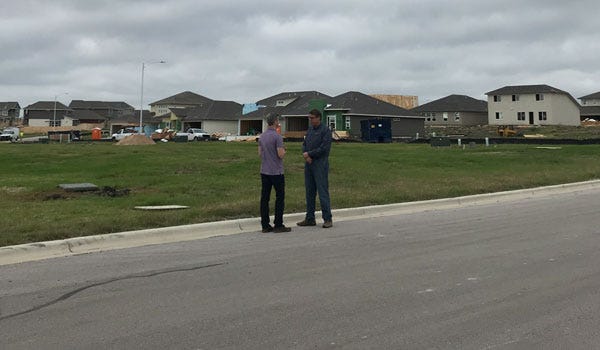
It was my hope to one day bring the show to Reykjavík, where volcanic activity beneath Iceland makes geothermal a very efficient heat source. Most homeowners in the city don’t even have a furnace or boiler- just pipes that enter the home and deliver warm water from central geothermal plants. That trip didn’t end up happening, but it was always on my wish list.
Even with some existing stories under our belts and on the vision board, talking about geothermal became difficult after a while. While the technology was very cool and showed a lot of promise as a renewal option, it felt like there were only so many ways to keep telling the same story. Unless there was a really unique or different angle to explore, I felt like we had talked geothermal to death.
But I soon learned that, even though we were reaching some people with our PBS show, the vast majority of the country still had no idea what we were even talking about.
(Geo what now? Isn’t that just the name of a rebadged Toyota Corolla in the 1990s?)
When my family moved to Western Massachusetts last year, I knew right away that our new house would be a good fit for geothermal. Our home is heated with propane, which is expensive to refill. Our air conditioner was nearly 30 years old and also costly to operate. And the previous owners had installed a giant rooftop solar array, meaning the electricity to run the geothermal system would be offset by power our house was generating for free.
I ended up reaching back out to Dandelion Energy to investigate the options, and to compare them to other possibilities for our house. A geothermal heat pump was the most expensive option, but it also came with generous federal and state subsidies. Geothermal would be the most efficient option to operate long term and offered the most sustainability from an environmental standpoint. It was a tough pill to swallow financially up front, but our hope is that we will be in this house for a long time and will enjoy the payback.
Work on our system began last month, with a 600 foot well drilled in our front yard. This week, a crew is digging a trench to connect that well with our basement, and by the end of the month, we’ll be completely off of fossil fuels and heating and cooling our house with geothermal.
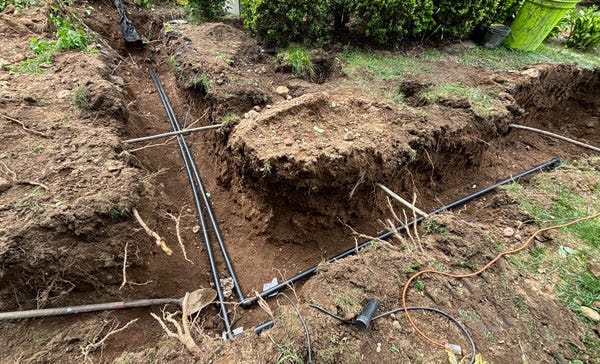
In part because of my fatigue from talking about geothermal at This Old House, I have been pretty quiet about our new installation. This is the first that I’m writing about it, and I haven’t posted anything on social media. I haven’t even mentioned it to neighbors or friends unless they’ve asked.
But the funny thing is, people have asked. In fact, just seeing the process happen in our front yard has generated all kinds of questions and discussions.
And to my surprise, as much time as I spent in my past life talking about geothermal, as much as I felt like we had talked it to death, as much as I felt like it wasn’t worth mentioning anymore, people have barely understood what I’m installing when talking to them face to face. It’s like an entirely new concept.
I may have been steeped in the world of home energy for a long time and brought the audience of This Old House along on that journey. But that doesn’t mean everybody else was a part of those conversations too. In our best weeks, Ask This Old House was reaching just under 3 million people when I was there, less than 1% of the population of the U.S.
Of those 3 million people, how many were interested in our geothermal segments? How many took that interest with them beyond watching the show? We may have been in front of 3 million, but maybe we only reached a few hundred people, maybe a few thousand at best, who might actually take action with this information.
Talking to neighbors or other curious people in my yard with a drilling rig in front of us seemed to hit differently than broadcasting to the country. The people who are chatting in my yard seem engaged in a different way, curious, and by the end of our discussions, considering this option for their own houses.
The point of this essay isn’t really about geothermal though. It’s a broader consideration about the fatigue we all feel about our various areas of expertise, activism, or interest.
We all have a role in changing the world. We may be talking about environmentalism, consumption, anti-racism, anti-imperialism, anti-fascism, women’s rights, Native American rights, disability rights, or any number of important topics.
Anytime we talk about the same thing over and over again, it can start to feel like shouting into a cave. The sounds of our own voice seems to ricochet across the walls, forming a personal echo chamber. We keep yelling, only to hear our own voice reflected again and again. It can feel like nothing is changing.
When we yell like this, we assume that everybody has heard our message. But they haven’t. They’re in their own world, thinking their own thoughts. We’ve said the same thing over and over, and even if people are hearing what we’re saying, they may not be ready to receive what they hear yet.
The problem with a lot of activism is that we often keep having the same conversations over and over again in the same venue. We’re either preaching to the choir or we’re annoying the people who keep hearing the same story over and over and will never be converted.
In order for our messages to be effective, they kind of need to be everywhere. Yes, broadcasting matters (whether that’s literal broadcast TV, podcasts, or social media), but it can’t be the only place we talk. We need to be open to having conversations anywhere, with people that agree and people that don’t. And face to face, one on one is always best.
I was ready to give up talking about an incredible, renewable energy source a long time ago, but I feel a bit recharged now. I realize that in order for a message to really stick and make a difference, sometimes people need to hear it multiple times, from multiple people, in multiple ways.
If you feel like you’ve been yelling into a cave lately, all that I can say is keep yelling. Or look for a different place to yell. Either way, don’t go quiet. We need your voice.
We also need more geothermal.
Thanks for reading Willoughby Hills! Subscribe for free to receive new posts and support my work.
Related Reading
If you’ve missed past issues of this newsletter, they are available to read here.





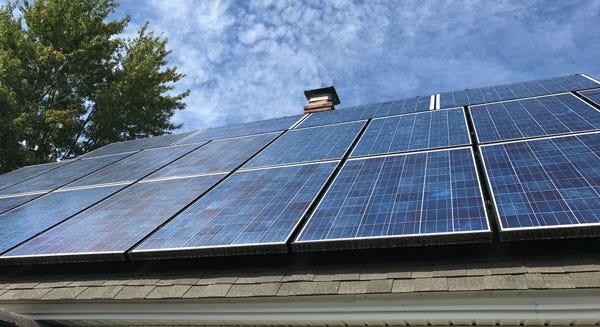
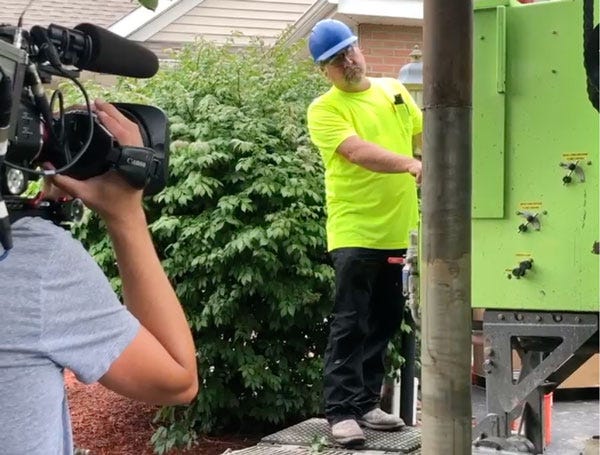
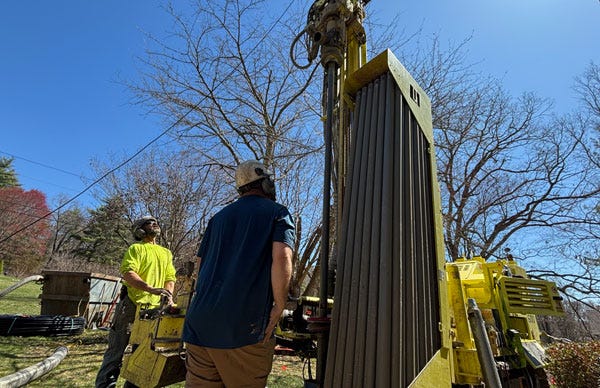
This is such an insightful piece and is so true!
A similar thing I’ve realized recently— and I’m not sure I’ll be able to articulate this well— is that, re: things I have expertise in, I can struggle to have conversations at the level they need to be at as I don’t want to assume someone doesn’t know something, or that they do. And then, I’m at a loss when they say something coming from a place of ignorance, literally just because they don’t know and maybe they’re talking about it because they want to know and understand.
Wow! What a cool career. Had no idea.